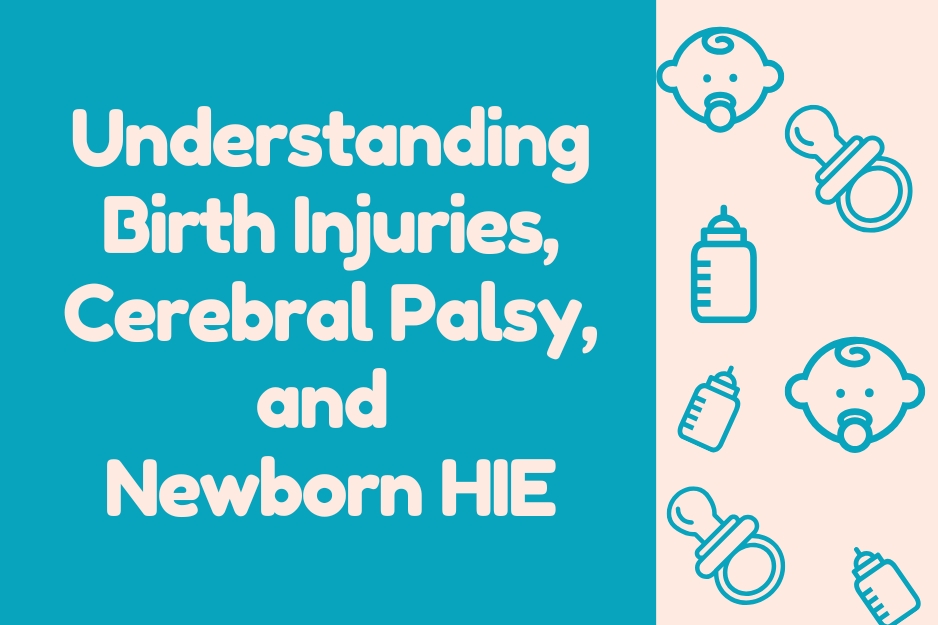
Understanding Birth Injuries, Cerebral Palsy, and Newborn HIE
The birth of a child is a moment filled with hope and joy, but for some parents, it may come with unexpected challenges. Birth injuries such as Cerebral Palsy or Hypoxic-Ischemic Encephalopathy Newborn (HIE) can bring confusion, heartache, and countless questions. If you’re navigating this difficult path, understanding what happened during your child’s birth—and whether...
CONTINUE READING
Understanding Birth Injuries. What New Parents Need to Know
The birth of a child is a life-changing event. As a new parent, you want nothing but the best care for your baby during labor and delivery. However, sometimes things can go wrong, and the baby can sustain injuries during birth. According to recent studies, birth injuries occur in about 7 out of every 1,000 births...
CONTINUE READING
Spastic Quadriplegia: What Is It and Why Does It Happen?
Cerebral Palsy (CP) is a neurological condition caused by an injury to or abnormal development of the parts of the brain that control movement, resulting in lifelong motor and muscular disabilities. The injury is most common in utero but can occur during childbirth or shortly thereafter. Babies suffering from cerebral palsy show physical developmental setbacks...
CONTINUE READING
Vacuum Extraction And Subgaleal Hematoma
Approximately 5% (1 in 20) of all deliveries in the United States are operative vaginal deliveries. An operative vaginal delivery refers to a physician’s use of either forceps or a vacuum device when a woman’s labor has stalled. Over time, the rate of operative vaginal delivery has been steadily decreasing. However, the number of vacuum-assisted...
CONTINUE READING
Ataxic Cerebral Palsy
Cerebral palsy (CP) occurs in nearly 1 in every 500 births, making it is the most prevalent cause of motor function impairment. A disorder of movement, muscle tone or posture, CP is a neurological condition caused by brain damage which is usually suffered before, during or soon after a baby is born. CP may also...
CONTINUE READING
Spastic Cerebral Palsy at Birth
Spastic cerebral palsy is a permanent loss of muscle control caused by an injury to the brain resulting from a variety of causes, one of which is a lack of oxygen to the baby during labor and delivery. Spastic CP is characterized by involuntary movement of the arms and legs, uncontrolled muscle spasms and can...
CONTINUE READING
The Yost Legal Group launches new TV commercial To Help Parents of Infants With Cerebral Palsy
The CDC estimates that about 10,000 babies born every year in the United States suffer from cerebral palsy. What’s even more heartbreaking is that many of these cases are the result of a medical mistake by a doctor, nurse or other medical professional. The Yost Legal Group works closely with parents of infants and young...
CONTINUE READING
Umbilical Cord Prolapse is Linked to Hypoxic Brain Injury in Children
When a woman is pregnant, the umbilical cord is what connects the mother to the developing fetus, acting as a lifeline for the child. It allows the supply of nourishment and oxygen for necessary development. Unfortunately, one in every 300 births involves an umbilical cord prolapse (UCP). An umbilical cord prolapse occurs when part of...
CONTINUE READING
HIE and Cerebral Palsy Impact Thousands of Infants Every Year
Birth injuries and birth trauma are far too common in the United States. Every year, thousands of infants will be born with life-threatening conditions that are the result of a medical mistake by a doctor, nurse, or other medical professional. The most serious birth injuries are caused when a lack of oxygen damages a child’s...
CONTINUE READING
Understanding Cerebral Palsy and Birth Injury Claims
The childbirth process should be a joyous and memorable experience for all families; but, not when there is a birth injury or trauma. At The Yost Legal Group, we represent families who have suffered a serious birth trauma or birth injury. We are committed to raising awareness about birth injuries in the U.S. One of the most common birth...
CONTINUE READING